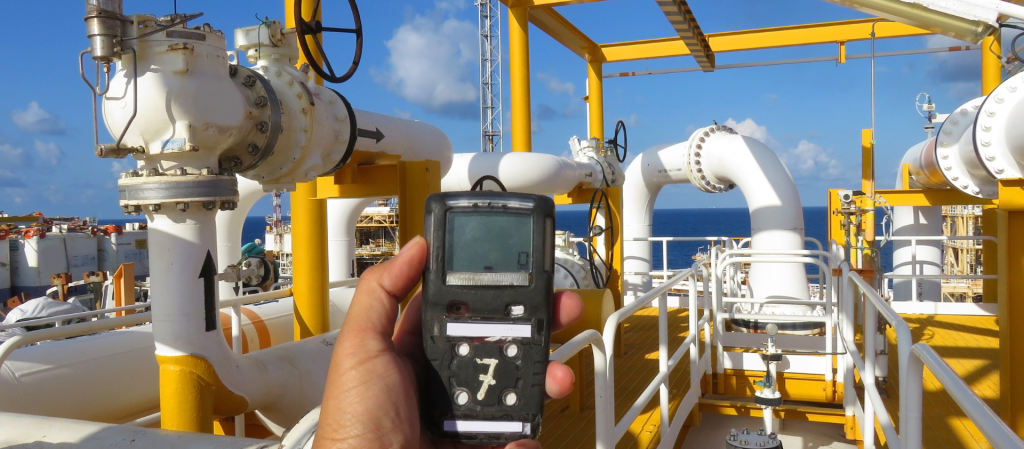The human being is not able to detect the presence of an ionizing radiation field. Because of this deficiency, it has been necessary to resort to devices that are capable of detecting the presence of ionizing radiation and, therefore, provide adequate radiological protection. In this article we will describe the main types of radiation detectors.
How radiation detectors work
When passing through a material, the radiation interacts with it, releasing energy to it, causing a series of effects through which it can be measured.
Most radiation detectors work in a similar way:
- Radiation enters the detector and interacts with the atoms in the detector.
- As a result of this interaction, the radiation gives up all or part of its energy to the bound electrons of these atoms.
- A large number of relatively low-energy electrons are released, which are collected and analyzed by an electronic circuit.
Possible classifications of detectors
Although the principle of detection is similar, detectors differ in the way they collect the information that the interaction has produced. In general, we can subdivide them into two types:
(a) Active detector: it needs an electronic reading system in operation while being irradiated to obtain the signal (e.g.: air ionization chamber).
b) Passive detector: can be used without the need for electronic recording during the irradiation process (e.g. photographic plate).
Another possible classification is whether ionization has occurred in the material medium, or whether it has been detected indirectly (e.g. in cases where light is first emitted and then converted into an electrical signal).
Main types of detectors
As mentioned above, there are several ways of classifying radiation detectors. In the following, we will list the most common types of detectors based on their principle of operation and their measuring purpose.
A) ACCORDING TO THEIR OPERATING PRINCIPLE.
A.1. Gas ionization equipment.
When radiation passes through a gas, it ionizes it. Gaseous ionization detectors use the ionic current collected in a known volume of gas. This gas is chosen taking into account the characteristics of the radiation and the mode of operation of the detector. When ionizing radiation passes through the gas, some gas molecules are left in an excited state and others are ionized. Ions can be created directly by the radiation or by the process of secondary ionization in which the electrons produced in a previous ionization acquire sufficient energy to ionize other molecules.
In turn, there are different types of gaseous detection systems:
(a) Ionization chamber. The voltage applied to the electrodes produces an electric field sufficient to capture all the charge generated by the incident radiation. Ionization chambers are preferably used for the detection of photons (X and gamma radiation) and beta particles. The current generated in the chamber is very small and its amplification is required to be measured.
b) Proportional counter. The voltage applied to the electrodes is higher than that of the ionization chamber and the phenomenon of charge multiplication occurs, caused by the electrons accelerated towards the anode gaining enough energy to ionize neutral gas molecules by impact. Although the magnitude of the voltage pulses is greater than in the ionization chamber, signal amplification is still necessary.
c) Geiger counter. If the bias voltage is raised above the proportionality zone, the resulting pulses all reach the same amplitude, regardless of the primary ionization due to the detected particle. The operating mode of the counter is then said to correspond to the Geiger zone.
A.2. Scintillation equipment.
Scintillation detectors have historically been one of the most widely used devices in the detection of nuclear radiation. They are based on the property of some materials to emit light after interacting with ionizing radiation. The materials of interest are those in which the emission of light is produced immediately by the process called fluorescence. The luminescent substance must have a high detection efficiency and to increase it, a substance called activator is added in small proportion.
A.3 Thermoluminescence equipment
Thermoluminescence is a characteristic of certain materials which, after being exposed to ionizing radiation, emit light when heated to a suitable temperature. The amount of light emitted is proportional to the energy deposited in the material by the radiation, so the energy deposited by the radiation and consequently the dose can be determined.
A.4 Semiconductor equipment.
Ionizing radiation passing through a semiconductor (such as a pure silicon or germanium crystal) creates abundant electron-hole pairs. A hole consists of a missing electron in the interatomic bonds of the crystal and can move through the bulk, with properties similar to a positive ion. By collecting these charge carriers, the passage of particles or photons can be detected and, under certain conditions, their energy can be measured.
A.5 Photographic emulsions.
This system was historically the first detector used. A photographic emulsion usually consists of silver bromide grains in a gelatin layer mounted on a material such as acetate. The grains are ionized by radiation giving rise to metallic silver and thus to a latent image that can be observed by developing the emulsion.

B) BASED ON THEIR MEASURING OBJECTIVE
B.1 Radiometers.
Radiometers are detectors that allow to know the intensity of the existing radiation in a certain place, and therefore, they have a very important role in a nuclear emergency to characterize the radiological situation of a certain area.
B.2 Contaminometers.
Contaminometers are detectors to measure surface contamination on people, vehicles and other property.
B.3 Dosimeters.
Dosimeters are detectors used to estimate the dose received as a result of tasks carried out in the presence of radiation.
If you want to continue reading about radiation detection, check our blog.
At Helgeson we have years of experience in the sector. We will be pleased to assist you. if you prefer specialized advice, guidance or have any questions, you can contact us.

